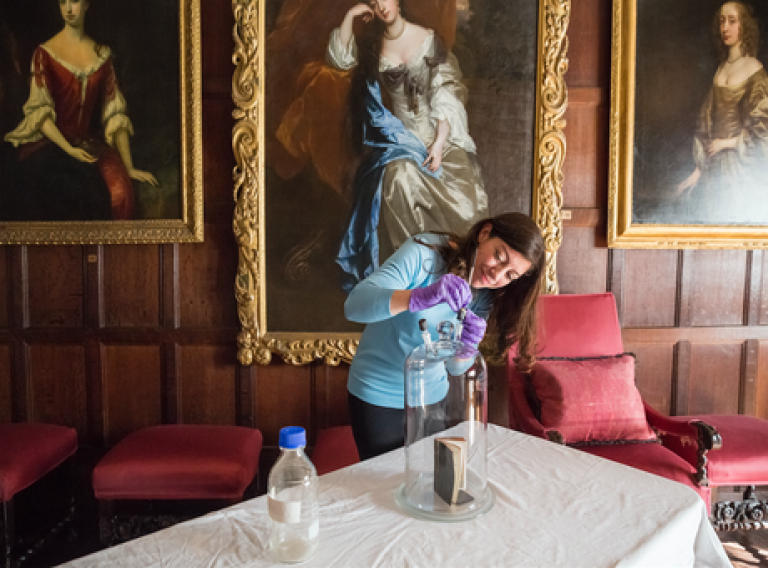image: UCL news release
Smell is perhaps more closely intertwined with memory than sight, sound, or any other of our senses. Indeed, scents are an incredibly important part of history and culture. That’s why Cecilia Bembibre and her colleagues at the UCL Institute for Sustainable Heritage are working to preserve certain smells for the ages. After all, smells are “the olfactory heritage of humanity,” she says. ”From the BBC:
But how do you capture something as intangible as a historical scent? One method involves exposing a polymer fibre to the odour, so that the smell-causing chemical compounds in the air can stick to it. Then Bembibre analyses the sample in the laboratory, dissolving the compounds stuck to the fibre, separating them and identifying them. The resulting list of chemicals is effectively a recipe for the scent.
Another method separates and identifies the compounds directly from the gas sample – an approach commonly used in the perfume, food and beverages industry, as it allows volatile odour-active compounds to be identified. A third way is to use the nose itself, either by asking panels of people to describe certain smells, or by asking expert “noses”, who may be perfumers or scent designers.
“We characterise the smell from the human point of view,” adds Bembibre. “This is important because if we want to preserve it for the future, it depends on many factors. Not only the chemical composition but also our experience.”
Bembibre has chemically extracted the smells of old leather gloves, ancient books and mould Bembibre has chemically extracted the smells of old leather gloves, ancient books and mould, among other things. She has reinterpreted the smells of a 1750 potpourri house recipe and of the old books housed in St Paul’s cathedral.
Source: Our olfactory heritage: researcher preserves scents before they’re lost forever













